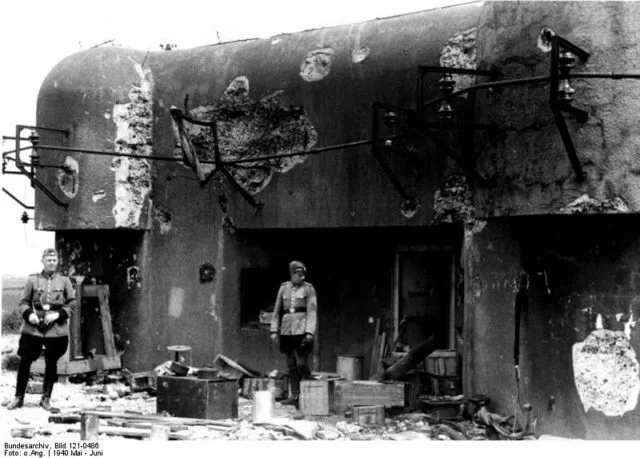Role of Concrete in Wartime Construction
Wars are often remembered for the bravery of those who served, the battles fought, and the strategies deployed. But behind every war effort lies the story of materials. Steel, timber, oil, and, unexpectedly, concrete, shaped the very infrastructure of the biggest world conflicts.
Concrete played a vital role in both World Wars, enabling the building of fortifications, ships, airstrips, harbours, and much more. Today, it’s everywhere, laying foundations to our homes, schools, hospitals and the roads we drive on.
For companies like ours, Remembrance Day is a chance to reflect not only on sacrifice but also on how the war drove the technological advances, which shape our world today.
A Material Reborn: The Rise of Modern Concrete
Concrete’s origins date back to the Roman Empire, but it was the invention of Portland Cement in 1824 that paved the way to the modern era. By the early 20th century, advances in mixing techniques, reinforcement, and formwork had transformed concrete from a domestic and industrial material into something far more versatile.
By the time war erupted in 1914, concrete was no longer just a builder’s tool. The maturity of concrete technology meant it was ready to meet the demands of a new kind of warfare – one that required endurance, ingenuity, and scale.
Concrete in WWI: Innovation Born of Scarcity
Steel Shortages and Creative Solutions
World War I placed enormous pressure on global steel supplies. Militaries needed steel for tanks, ships, and ammunition, leaving construction with little to spare. Concrete, especially concrete reinforced with steel mesh or rebar, was widely adopted as a strategic alternative.
Floating Fortresses: The First Concrete Ships
Facing steel shortages, the United States experimented with concrete vessels. In 1917, ships like the SS Faith and SS Atlantus were launched, followed by others in Britain—over 150 concrete ships, including tugs, barges, and car floats.
Though heavy and slow, they served a purpose. Many were later sunk as breakwaters or repurposed: one became a dance hall, another a rum-runner’s base during Prohibition.

Concrete on Land: From Trenches to Pillboxes
On land, concrete reinforced trenches, sheltered troops, and supported machinery. Early in the war, the Germans made greater use of concrete than the Allies, investing heavily in durable fortifications such as pillboxes, emplacements, deep dugouts, and precast blocks that could be quickly assembled into bunkers. These structures formed key sections of strategic defensive lines, including the Hindenburg Line.
Later in the war, the Allied forces adopted similar methods, using reinforced concrete to construct more permanent positions, such as British and French casemates built to house infantry machine guns and anti-tank guns, thereby strengthening their defensive networks.
Concrete in WWII: Material of the Machine Age
Fortifications: Concrete as a Line of Defence
By the Second World War, concrete was essential for the war efforts.
Nazi Germany’s Atlantic Wall, stretching from Norway to the French-Spanish border, consumed over 40 million tonnes of concrete to build 15,000 bunkers, pillboxes, anti-tank walls, and artillery casemates alone. Meanwhile, France’s Maginot Line and Germany’s Siegfried Line stood as massive reinforced defensive networks.
Concrete wasn’t just protection—it was psychological warfare. The imposing nature of these structures sent a message of permanence and power.

D-Day and the Concrete Solution
When the Allies prepared for D-Day, they faced a challenge: the beaches of Normandy lacked major ports. The solution? Create one.
Engineers designed Mulberry Harbours, massive artificial ports made possible by “Phoenix Units”—hollow concrete caissons built across Britain in secrecy, floated across the Channel, and sunk to form protective sea walls.

These temporary harbours, known collectively as Port Winston, enabled the landing of 2.5 million troops and over 4 million tonnes of supplies, proving that concrete could not only withstand war, but enable victory.
Reviving the Concrete Fleet
With steel still rationed, the concrete fleet was revived. McCloskey & Co. built 24 concrete ships for the U.S. Navy, including the SS Vitruvius and SS David O. Saylor. Post-war, just like the last time, many were repurposed and turned into wharves, breakwaters, and even a hotel in Cuba.
Concrete Mats and Beaches
Modular concrete was also experimented with to support the varying needs of the wartime effort. Engineers developed interlocking concrete mats, nicknamed “chocolate blocks”, to create stable beachheads for tanks and vehicles. Mainly adopted by the British army, they played a big part in its defensive strategy.
From Destruction to Reconstruction
What happened to the millions of tonnes of wartime concrete? Some was dismantled, some left to decay, but much was repurposed: as piers, breakwaters, agricultural sheds, or foundations for post-war rebuilding.
More importantly, the advances in formwork, mixing technology, and reinforced concrete design developed during wartime directly influenced the post-war construction boom, from bridges and highways to public buildings and housing.
Why It Matters Today
When we remember war, we remember lives lost, and rightly so. But it’s also important to reflect on the quieter elements: the materials, the infrastructure, and the engineering that made it all possible.
Today, many wartime concrete structures still stand. They are silent monuments reminding us that concrete’s wartime story is one of resilience, adaptability, and endurance. These values continue to shape our industry today.

